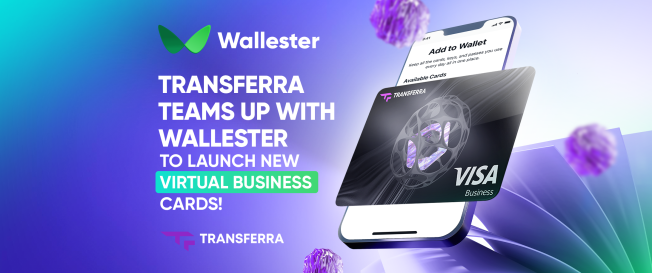Welcome to the evolving world of payment cards, a space marked by rapid innovation and shifting consumer expectations. As a business owner looking to launch your own white-labelled card program, you have the opportunity to not just participate in these changes but to shape the future of financial transactions.
It’s a future where the physical and digital financial worlds converge, creating a seamless and secure transactional environment. It’s a future where sustainable practices matter as much as operational efficiency, and it’s a future where consumers demand more flexibility and control over their financial transactions.
In this article, we will explore some of the key trends shaping this future and how you, as a prospective issuer of a white-label card program, can leverage these trends to deliver an innovative and engaging product.
At the end of this journey, you’ll have a deeper understanding of these trends and be better equipped to evaluate how you can integrate them into your upcoming white-labelled card program for maximal customer appeal and market success. This is not just about riding the wave of innovation but about actively steering the direction of your financial product to align with the future of payment cards. So, let’s dive in.
I. Virtual Cards & Disposable Virtual Cards
One of the most pronounced financial trends in the current digital age is the emergence and growing popularity of virtual cards and disposable virtual cards. These digital solutions are transforming the world of both online and offline transactions, underpinning the heightened level of security and offering unparalleled flexibility.
Virtual cards are essentially digital equivalents of traditional payment cards. However, instead of a tangible plastic card, users receive just the card credentials, such as a PAN number, expiration date, and security code. These can be used for online shopping, subscriptions, and other recurring payments. Similarly, virtual cards extend their utility beyond the online realm by integrating directly into a digital wallet accessible on one’s phone or other smart devices, a functionality we’ll delve into further in a later stage of our discussion. Overall, a virtual card can’t be lost or stolen when you are out and about, which makes it not just the most convenient solution but also the safest one.
Furthermore, disposable virtual cards offer even more protection. Designed for single use, these card details become unusable after one transaction. This feature significantly mitigates the risk of card information theft and online fraud, particularly when engaging with less reputable online retailers. Serving as a protective shield, disposable virtual cards fortify security around potentially vulnerable transactions, thus helping to maintain users’ financial integrity in a digital landscape increasingly targeted by cyber threats.
Embracing virtual cards in your white-labelled card program can have many advantages that resonate with your customer’s expectations and drive your business growth. By offering virtual cards, you are tapping into a growing customer preference for digital solutions that prioritise security and convenience.
II. Contactless Payments & Digital Wallets
Continuing the topic of convenience, contactless payments, enabled by Near Field Communication (NFC) technology, have given birth to a faster, more efficient transaction method. With a physical card equipped with an NFC chip, simply tapping a card to a terminal is all it takes to complete a purchase — no swiping, no PINs, just a quick tap, and you’re on your way. By eliminating physical contact, this technology expedites checkouts and mitigates the risks associated with traditional forms of payment, such as card cloning or theft.
As we touched upon earlier, the utility of virtual cards extends to contactless payments. By integrating them into the digital wallet of one’s smartphone or another smart device – a process facilitated by NFC technology – virtual cards can also be used for swift and secure contactless transactions. As the name suggests, the digital wallet provides a safe, virtual space to store virtual payment card information, as well as that of the regular physical one, effectively reducing our reliance on physical wallets. These wallets offer the convenience of making payments or transferring money with just a tap on your smartphone, a feature that aligns well with our ever-growing digital lifestyles.
As contactless payments, digital wallets, and virtual cards continue to evolve and intersect, they collectively shape a more secure, efficient, and user-friendly future. This future, where the boundaries between the physical and digital financial worlds blur, is the new norm, profoundly shaping our everyday transactions. Therefore, ensuring that your upcoming card program aligns seamlessly with leading digital wallet alternatives, including but not limited to Apple Pay, Google Pay, and Garmin Pay, is essential. This guarantees compatibility with a broad range of preferences and devices, bolstering the overall user experience and the versatility of your card program.
III. Buy Now, Pay Later (BNPL)
As the financial sector continues to evolve and adapt to changing consumer needs, one trend that’s garnered substantial traction is the integration of Buy Now, Pay Later (BNPL) capabilities into payment cards. This development marks a significant stride in transforming the dynamics of consumer finance.
The BNPL model, which allows consumers to make purchases instantly and defer payments over a set period, has traditionally been popularised in e-commerce checkouts. However, with various companies starting to integrate this model into payment cards, the scope of BNPL extends beyond the digital realm, encompassing both online and in-store purchases. This harmonises the convenience and flexibility of BNPL with the widespread acceptance of payment cards, thereby elevating the purchasing power of consumers.
In essence, a BNPL-enabled payment card offers the benefits of instant financing, not limited to specific retailers or online platforms. Consumers can utilise this card for any purchase, whether online or offline, and repay the amount in instalments. This added functionality on a payment card enhances financial flexibility for consumers and can contribute to better money management.
Moreover, from the company’s perspective, payment cards with BNPL capabilities can help increase sales and customer loyalty. Since this service allows consumers to make purchases they might otherwise postpone or abandon, it can lead to higher conversion rates and larger transaction volumes.
V. Multi-Currency Cards
One significant evolution in the world of payment cards is the advent of multi-currency cards. These cards are paving the way for a more fluid and inclusive financial ecosystem, particularly in an increasingly interconnected global economy.
Multi-currency cards simplify the process of transacting in foreign currencies. As their name suggests, these cards allow users to hold multiple currencies on a single card. This is a departure from traditional cards, which typically only allow transactions in the cardholder’s home currency. With a multi-currency card, users can switch between currencies as needed, making these cards an invaluable tool for frequent travellers and international businesses.
By using a multi-currency card, cardholders can enjoy several advantages. Firstly, these cards can reduce or even eliminate foreign transaction fees, leading to substantial savings for those often transacting in multiple currencies. Secondly, users can lock in exchange rates when loading money onto the card, thus safeguarding against potential currency fluctuations. This feature provides financial predictability, which is particularly valuable in today’s volatile currency markets.
For businesses considering launching their own white-labelled card, incorporating multi-currency features into your offering can bring substantial benefits. A multi-currency card increases convenience and flexibility for your users, making your card more appealing to those who frequently travel or conduct business internationally. This, in turn, could help you attract a larger and more diverse customer base, expanding your market reach.
In addition, offering a multi-currency card could potentially lead to cost savings for your users. By reducing or even eliminating foreign transaction fees and allowing users to lock in exchange rates when loading money onto the card, you’re adding tangible financial value to your offering. These features could prove to be a significant differentiator in a competitive marketplace, giving you an edge over businesses offering more traditional card programs.
IV. Biometric Authentication Technologies
In the rapidly evolving financial technology landscape, the convergence of biometrics and payment cards presents an exciting new frontier. Biometric authentication, which uses unique physical attributes to verify individuals’ identities, is steadily redefining the standards for transactional security and personalisation.
Currently, biometric technologies, such as fingerprint scanning and facial recognition, are widely used in digital wallets. By leveraging the sophisticated sensors built into most modern smartphones, these technologies offer an extra layer of security that is not only highly secure but also inherently personal. This makes transactions safer, as the risk of compromise is reduced and more streamlined, as there’s no need to remember PINs or passwords.
Looking towards the future, the trend of integrating biometric authentication with payment technologies shows promise of extending to physical cards as well. The vision is a future where Point-of-Sale (POS) systems are equipped with biometric technology to read and authenticate data directly from physical cards. This scenario would provide a robust level of security, reducing the risk of fraudulent transactions even in the case of card loss or theft. Moreover, it would offer a seamless user experience, with quick and easy payment authentication that doesn’t rely on remembering a PIN or signing a receipt.
While the construction of innovative POS systems and the creation of digital wallets may be outside the capabilities of businesses launching their own white-labelled cards, integrating Biometric Authentication Technologies into your mobile application is an achievable and impactful trend. Offering biometric authentication in your mobile app not only ensures the safety of transactions but also adds an element of personalised customer experience that is increasingly valued in today’s digital world.
V. Environmental and Social Impact (ESG)
As we chart the future of payment cards, it’s impossible to overlook the increasingly significant role of Environmental, Social, and Governance (ESG) factors. With a global consciousness that’s shifting towards sustainable and socially responsible practices, the financial sector is witnessing a tangible push towards integrating ESG principles, particularly regarding card production and materials.
One primary area of focus in the ESG sphere is the material composition of payment cards. Traditionally, these cards have been made from PVC (polyvinyl chloride), a type of plastic that is neither biodegradable nor easy to recycle. However, this is changing with the invention of ‘eco-friendly’ cards made from alternative materials like recycled PVC, bio-sourced plastic, and even wood.
The shift towards these more sustainable materials is crucial for reducing the environmental footprint of payment cards. Millions of cards are produced every year, and as they expire, they contribute to a significant volume of non-biodegradable waste. Eco-friendly cards made from recycled or biodegradable materials are, therefore, an important step towards a more sustainable financial industry.
Embracing ESG considerations is not just the right thing to do—it’s smart business. As you consider launching your white-labelled card program, ensuring it aligns with these sustainability trends will help secure its success today and in the future, resonating with the increasing environmental consciousness of society and ensuring compliance with ever-tightening environmental regulations.
Embrace the Future with Wallester White Label
As we journey towards the end of this deep dive into the dynamic world of payment cards, it becomes clear that the future of finance is defined by innovation, convenience, and sustainability. From the surge in contactless payments, virtual cards, and ‘Buy Now, Pay Later’ integration to the rise of multi-currency cards, biometric authentication technologies, and environmentally conscious practices, these trends set the tone for the financial sector’s future.
As a forward-thinking business owner, leveraging these trends to your advantage is essential to ensuring your white-labelled card program stands out in an increasingly competitive market. Each of these trends presents unique opportunities to enhance your product’s value proposition, boost customer engagement, and demonstrate your commitment to innovation and sustainability.
This is where partnering with a proven and capable technology partner like Wallester, a leading European VISA enabler, can prove invaluable. Wallester’s comprehensive White Label solution provides a robust platform to launch your card program with all the cutting-edge features your customers expect. From being able to issue disposable virtual cards alongside biodegradable physical ones to integrating , utilising biometric authentication, and much more, Wallester’s White Label solution empowers you to stay ahead of the curve and deliver a card program that aligns with the evolving demands of today’s savvy consumers.
Remember, launching a white-labelled card program is not just about embracing current trends—it’s about leading the charge toward a future where financial transactions are seamless, secure, flexible, and sustainable. With Wallester, you have a trusted partner who can help you navigate this exciting journey.
Take the first step towards the future of payment cards by contacting us today to discover how our White Label solution can bring your vision to life. Because the future of finance doesn’t just belong to those who keep pace with trends—it belongs to those who set them.
We will be happy to meet and discuss your business case and how we can help.
Please feel free to contact us here.
We’re here to assist you.


